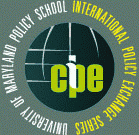Cash Transfers and Guaranteed Minimum Income Programs:
Research, Evaluation, and Policy
Prague, Czech Republic
September 9-10, 2024

-
“Cash Transfers for Maternal and Child Nutrition: What Can the Indian Experience Teach Us?”
Shree Saha, Cornell University
Cash transfers for maternal and child nutrition: What can the Indian experience teach us?
Notwithstanding the rich literature on the debates of in-kind versus cash transfers, the role of these approaches to addressing child nutrition merits special attention for many reasons. First, children’s access to in-kind aid and cash both are mediated by adult family members, who decide how to use it – whether other family members share what is meant for the child. Second, the objective of in-kind aid for children is often more explicitly focused on nutritional outcomes than those that addresses food security concerns more generally. This implies that comparisons between cash and in-kind for child nutrition must focus on the ability of a specific approach to translate into specific nutritional goals for children. This paper draws on research over the past two decades from across the globe, covering mainly but not exclusively peer-reviewed published research.
The particular focus of our paper is India, where government interventions for pregnant and nursing women have had both components – cash transfers (with and without conditions) as well as in kind transfers of Take Home Rations (THR). This allows us to get a comparative, if limited, perspective of the potential benefits and pitfalls of each approach through these specific schemes. W present survey-based evidence in addition to a narrative review of existing global evidence and those focusing on these specific programs.
Our analysis suggests that there is no unambiguous way forward for India and no strong evidence to suggest that one should be replaced by another. Indeed, whereas debates often pit cash and in-kind transfers against one another, as alternatives, there has not been adequate attention to the possibility of a combination of a cash and in-kind transfer. It is important to recognize that cash and kind often serve complementary needs, especially in the context of maternal and infant nutrition.
Despite the potential savings associated with cash transfers and its demonstrated impact on certain first and second order outcomes – such as access to services and improved diets – there is limited evidence that it improves infant and neonatal mortality and stunting among children. Researchers agree that there are several barriers that might prevent the translation of such cash transfers into desirable nutritional outcomes, notably the quality of services that are associated with conditionalities. Existing evidence suggests too that conditionalities might not work, unless they are minimal and easy to understand. In-kind transfers have done better in terms of impacts on child nutrition, even as it is apparent that the quality of THR and modalities of procurement and distribution leave much to be desired – in terms of content and reliability and efficiency of supply chains as well as distribution. A combination of both, with an improvement on the last mile delivery is the need of the hour.
This proposed contribution draws on work funded by the International Growth Centre (IGC) to inform public policy in India. We intend this to be considered for the theme titled “Synthesize what is known about cash transfer programs, from past evaluations, research syntheses, and theory”

